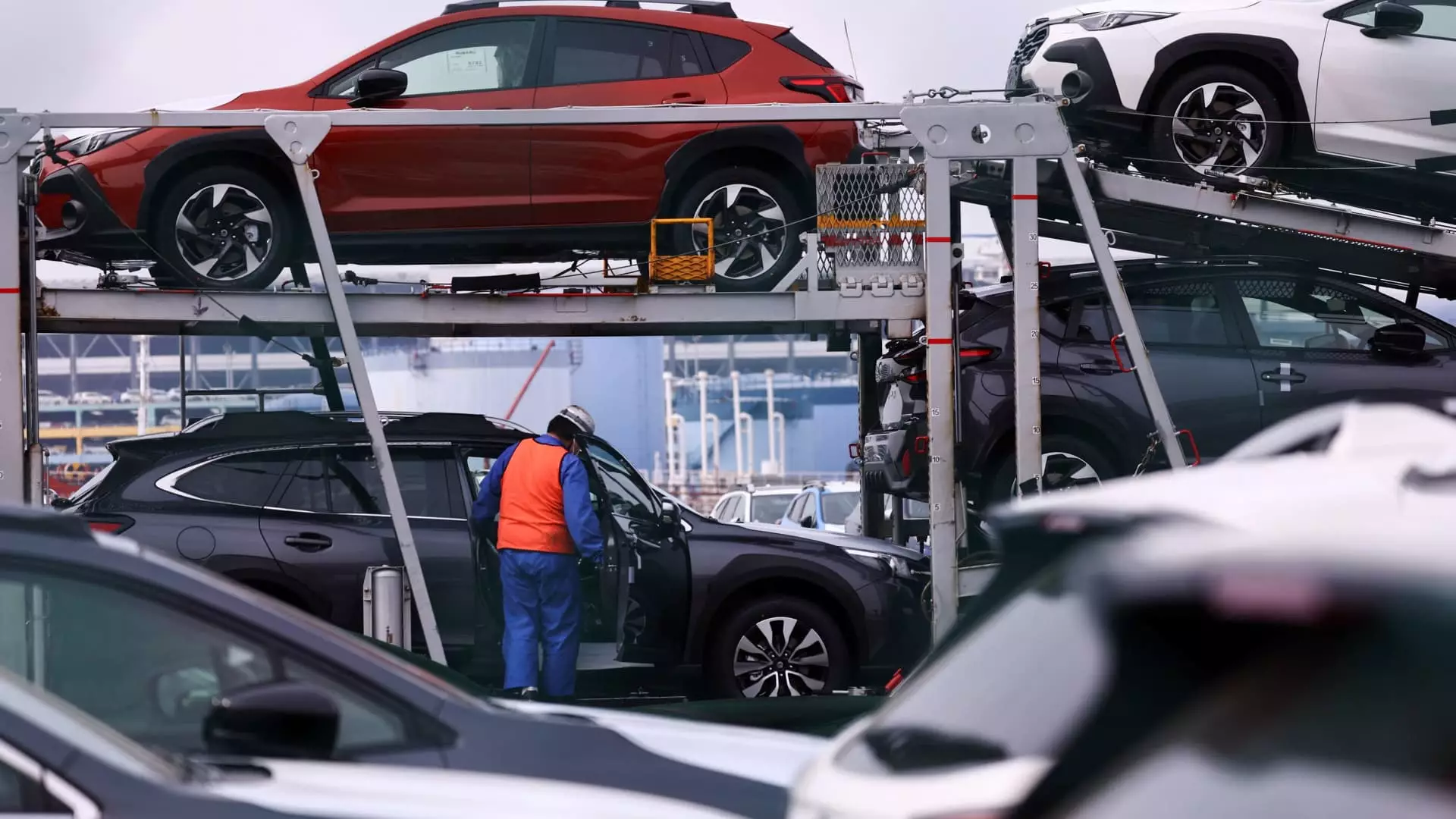In a move reminiscent of a high-stakes poker game, President Donald Trump has ventured into the unpredictable world of auto tariffs, igniting fears of economic uncertainty among investors. The president’s announcement of a 25% tariff on foreign vehicles has amplified tensions in a market already fraught with anxiety. The immediate fallout was evident: the Dow Jones Industrial Average plummeted by 216 points, illustrating the ripple effect of Trump’s unpredictable trade strategies. This predicament raises serious questions about the efficacy of such blanket tariffs and their broader implications on the economy.
Selective Winners and Losers in a Tariff War
While the overall market suffered from Trump’s announcement, one company did manage to surf the tariff tidal wave: Tesla. With its domestic production heavily lauded, the electric vehicle maker enjoyed a modest gain of 1.5%. Herein lies the inconsistency of Trump’s actions; by clamping down on foreign automakers while favoring a domestic success story like Tesla, the administration unavoidably creates a dichotomy that could destabilize other sectors. Auto giants like General Motors lost 7% and Stellantis dipped by 2%, creating an uneven playing field that may leave many U.S. jobs at risk in the long run. This selective favoritism raises ethical questions about free trade and government intervention in the market.
Tariffs as Tools for Negotiation: Dangerous Precedent
Trump’s approach to tariffs as a form of negotiation is undeniably alarming. His threats to impose “far larger” tariffs on the European Union and Canada smack of desperation rather than diplomacy. This tactic, while it may appease his base, undermines the fundamental principles of international trade, which rely on cooperation rather than confrontation. The long-term ramifications could lead to a fracturing of alliances that took decades to build. When trade becomes a weapon, it is consumers and workers who ultimately bear the brunt of the fallout.
A Market on Edge: Clarity is Key
Market analysts have echoed a common sentiment: Trump’s erratic trade policies leave investors feeling queasy. Sameer Samana, a seasoned strategist at Wells Fargo, pointed out that the scattershot nature of these tariffs creates an environment rife with uncertainty. Investors need transparency and clarity to navigate their decisions effectively; without it, market confidence plummets. Indeed, a coherent trade and tariff framework is essential for companies and consumers to make informed choices—only then can the market stabilize and avoid catastrophic declines.
Economic Growth at Risk: One Misstep Could Lead to Recession
We are at a tipping point where tariffs could create a significant slowdown in the economy. The prospect of ongoing trade wars could reverse any progress made in GDP growth. The current landscape suggests that profits could take a backseat as companies grapple with increased operational costs. A protracted trade conflict threatens to chip away at consumer purchasing power, a crucial driver of the U.S. economy. If Trump’s administration continues down this reckless path, the risks deepen, and the dream of robust economic growth may fade into an uncertain reality. It may be time for a more measured approach, one that prioritizes collaboration over conflict.


Leave a Reply